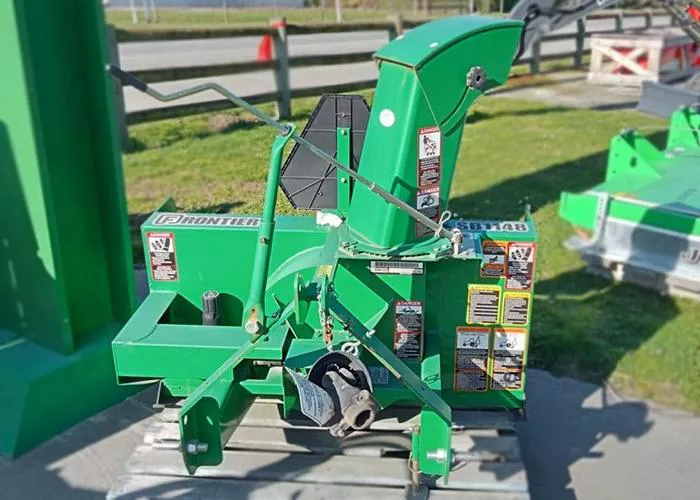Snowblowers, also known as snow throwers, are essential machines designed to clear snow efficiently from driveways, sidewalks, and roads. These powerful devices reduce the physical effort required to remove accumulated snow, making winter maintenance much easier and safer.
This article will provide a comprehensive overview of snowblowers, including their working principles, types, applications, and key features to consider when choosing one.
How Does a Snowblower Work?
A snowblower functions by gathering snow and forcefully ejecting it away from the cleared area. The working mechanism varies depending on the type of snowblower, but the basic operation includes:
Intake – Snow is collected by an auger, a rotating blade or screw-like component located at the front of the machine.
Processing – The auger directs the collected snow toward an impeller or chute.
Ejection – The impeller or chute expels the snow at a distance away from the cleared path.
Types of Snowblowers
Snowblowers are categorized based on their power source, stage operation, and design. The three main types are:
Single-Stage Snowblowers
Description: Single-stage snowblowers use an auger to gather and propel snow out of the chute in one motion. They are typically lightweight and suitable for light snowfall conditions.
Features:
- Best for clearing small driveways, decks, and patios.
- Works efficiently for snow depths of up to 8 inches.
- Electric or gas-powered options available.
- Not ideal for wet or heavy snow.
Two-Stage Snowblowers
Description: Two-stage snowblowers utilize both an auger and an impeller. The auger collects the snow while the impeller helps throw it out through the discharge chute.
Features:
- Suitable for medium to heavy snowfall conditions.
- Can handle snow depths of up to 23 inches.
- Self-propelled for easier maneuverability.
- Effective on uneven or gravel surfaces.
Three-Stage Snowblowers
Description: These advanced models incorporate an accelerator in addition to the auger and impeller. The accelerator helps break down ice and compacted snow before discharge.
Features:
- Designed for deep, heavy snow (over 20 inches).
- Offers the highest power and efficiency.
- Best suited for large driveways, commercial properties, and roads.
- Handles ice and slush effectively.
Power Sources of Snowblowers
Snowblowers can be categorized based on their power source:
Electric Snowblowers
- Ideal for small to moderate snowfall.
- Lightweight, low maintenance, and easy to start.
- Corded models require access to an outlet, while cordless models run on rechargeable batteries.
Gas-Powered Snowblowers
- More powerful and capable of handling heavy snowfall.
- Requires regular fuel and maintenance.
- Ideal for larger areas and commercial use.
Key Features to Consider When Choosing a Snowblower
Selecting the right snowblower depends on several factors:
Clearing Width and Intake Height
- Determines how much snow the machine can handle at once.
- Wider clearing widths are more efficient for large spaces.
Engine Power and Performance
- Measured in cubic centimeters (cc) for gas engines.
- More power means better handling of deep and heavy snow.
Chute Control and Adjustability
- Adjustable chutes allow users to control the direction and distance of snow discharge.
- Some models offer remote or joystick-controlled chutes for convenience.
Tires and Traction
- Large, treaded tires or tracks improve maneuverability on icy or sloped surfaces.
- Self-propelled models require less effort to push.
Additional Features
- Heated handles for comfort in cold conditions.
- LED headlights for improved visibility.
- Electric start options for easy ignition.
Common Applications of Snowblowers
Residential Use
Homeowners use snowblowers to clear driveways, sidewalks, and patios, preventing snow buildup and ensuring safe walking conditions.
Commercial and Industrial Use
Businesses, municipalities, and snow removal services rely on heavy-duty snowblowers to clear parking lots, roads, and public spaces.
Agricultural and Rural Applications
Farmers and rural property owners use snowblowers to maintain access to barns, equipment sheds, and unpaved roads during winter months.
Safety Tips for Operating a Snowblower
Wear Protective Gear – Use gloves, goggles, and boots for protection against cold and debris.
Read the Manual – Follow the manufacturer’s guidelines for safe operation and maintenance.
Keep Hands Away from Moving Parts – Never attempt to clear clogs while the machine is running.
Use the Right Fuel – Gas-powered models require specific fuel types to prevent engine damage.
Operate in a Well-Ventilated Area – Avoid using gas-powered snowblowers indoors due to carbon monoxide risks.
Maintenance and Storage
Proper maintenance extends the lifespan of a snowblower:
- Regularly check and replace worn-out parts (e.g., belts, spark plugs, shear pins).
- Drain fuel from gas-powered models before long-term storage.
- Clean the chute and auger after each use to prevent clogging.
- Store in a dry, covered space to prevent rust and deterioration.
Conclusion
Snowblowers are indispensable tools for efficient snow removal, offering various models suited to different needs. Whether for residential or commercial use, selecting the right snowblower can significantly improve winter maintenance. Understanding their operation, power sources, and key features helps ensure safe and effective snow clearing. By following maintenance practices, users can maximize the performance and longevity of their snowblower, making winter conditions more manageable.

